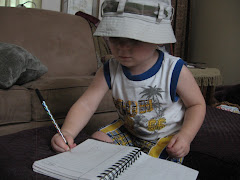Florian, D.
(2005). Zoo’s who. New York , NY
Douglas Florian began writing poetry in 1994 and has since
received the Lee Bennett Hopkins Poetry Award for his book Beast Feast and the Claudia Lewis Award for Mammalabilia. His poetry
often focuses on animals as do the pieces in Zoo’s Who. These poems,
while extremely short (most are no longer than 4 lines each), have wonderful
rhythm and rhyme, and children who are a little older will love the word plays
and puns, such as the one found in this clever little poem:
The Eagle
I’m not a
seagull.
I’m royal.
I’m regal.
All birds
are not
Created
eagle.
There are poems that challenge and stretch the language of
the reader, even big readers like me.
See if you can decipher the words in this poem:
The Penguin
A penguin
isn’t thin – it’s fat.
It has
penguinsulation.
And it
toboggans through the snow
On
Penguinter vacation.
The
penguin’s a penguinsome bird
Of
black-and-white fine feather.
And it will
huddle with its friends
In cold, penguindy
weather.
Some of the poems in this book are almost concrete poems –
taking the shape of the topic. Read “The
Terns” to students. The four lines are
written in the shape of a square, starting at the top left. Discuss the word play of the word “tern.” Then have students try their hand at writing
a poem with a shape that illustrates the topic.
"The Terns. Terns turn left, and terns turn right. / Terns take turns at learning flight. / Terns, in turn, learn from each other. / One good tern deserves another."
Florian did the art for the poems as well, using a variety
of materials. The pictures are full-page
pictures on the facing page of the poem and are very intriguing, inviting a
second or even third look. While the
main illustration for each poem is a watercolor painting of the featured
animal, other shapes and letters are stamped onto the page. Bits of shredded paper with words and letters
on them are glued onto many of the pages along with other bits of paper, tin
foil, and candy wrappers. Exploring the
content of the pictures is as much fun as reading the poetry.
Florian is a new poet for me. I haven’t ever read any of his work before;
however, the content of this book has both my grandson and me interested in
finding more of his work. Animals are a
universally interesting topic for young children, and this volume is no
exception.




